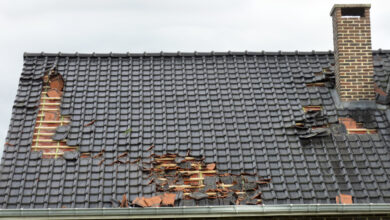
Who Invented Lightning Rods and How It Works
Electricity, when uncontrolled, has the ability to cause tremendous destruction to appliances and electronics. For that particular reason, it became a necessity to invent something that can capture lighting and protect you from it. That is the history behind lightning rods.
Controlling electrical energy eventually change the course of civilization. Among the many discoveries made, the lightning rod is a fundamental milestone achieved. Benjamin Franklin’s idea enables lightning bolts to be attracted to points that weren’t dangerous.
This resulted in humanity no longer being afraid of storms. That said, a lot of people still confused the lightning rod with Edison, who invented the light bulb. As a matter of fact, Benjamin Franklin was one of the first people to suggest daylight savings time to save energy.
In this article, we will be sharing what a lightning rod is and how it works.
Table of Contents
What is a Lightning Rod?
A lightning rod is rather simple. It’s a pointed mental rod that’s attached to a building’s rooftop. The rod is usually 2 cm in its diameter, connected to a large piece of aluminum or copper wire that is also around an inch in diameter. This wire is connected to a conductive grid which is buried nearby in the ground.
What is the Purpose of a Lightning Rod?
Many people believe that lighting rids are meant to attract lightning, and this is something that’s usually misunderstood. Lightning rids offer a low-resistance path towards the ground which is then used to conduct large amounts of electrical current when there’s a lightning strike.
When lightning strikes, the lightning rod’s system tries to carry all the harmful electrical current further from the structure and bring it safely to the ground. The system can handle powerful electrical currents that are caused by lightning strikes.
If the lightning strike comes in contact with a material that isn’t exactly that great of a conductor, the material will definitely suffer extensive heat damage. The lightning rod’s system in itself is an excellent conductor and therefore it slows the current to smoothly flow to the ground without causing heat damage.
How Does a Lightning Rod Work?
People often ask how a lightning rod actually works. In simple words, it’s an air terminal that provides external protection to a structure from behind affected by direct lightning strikes. The lightning rod has to be installed over the highest possible point of the structure that needs protection. Its duty is to capture and further conduct the lighting discharge in a safe manner to the ground.
In stormy weather, a high voltage happened between the cloud to earth system because of the extensive number of o electrical charges that are at the base of the cloud and the ground as well.
How Does a Lightning Strike?
Lightning has the ability to “jump around” the moment it strikes. Now, this particular “jumping” is always associated with the amount of potential the electricity has for its strikes target to the earth’s potential.
The lightning can strike and further “seek” a pathway of the least resistance by simply jumping around to objects placed nearby that may provide a much better path to the ground. If the lighting was to happen near the lightning rod, its system will create a low-resistance path to observe a “jump” that ensures the strike current is very well diverted to the ground before any damage happens.
Therefore, it’s not the purpose of the lightning ride to attract lightning. It only offers a safe option for lightning strikes to choose. This might sound too picky, but if you considered the fact that lighting rods became relevant when a strike happens or immediately after it occurs, then it’s not a picky solution.
Whether a lightning rod is present or not, the strike will still occur. For instance, if the particular structure that you want to protect is out in the open, especially if it’s a flat area, you usually create basic lightning protection systems that utilize a very tall lightning rod.
If this area then finds itself in a powerful electric field, the lightning rod can start to send up positive streamers in the hopes to dissipate the electric field. That said, there’s no a hundred percent assurance that the lightning rod will always be able to conduct the lightning discharge in an immediate area, but it does give you a better option than the structure itself.
Conclusion
Once again, the goal of a lightning rod is to create a low-resistance path to the ground in areas where there’s a high possibility of strikes. The possibility often arises from how powerful an electric field is during storm clouds.
Read more interesting articles at Pick-kart








